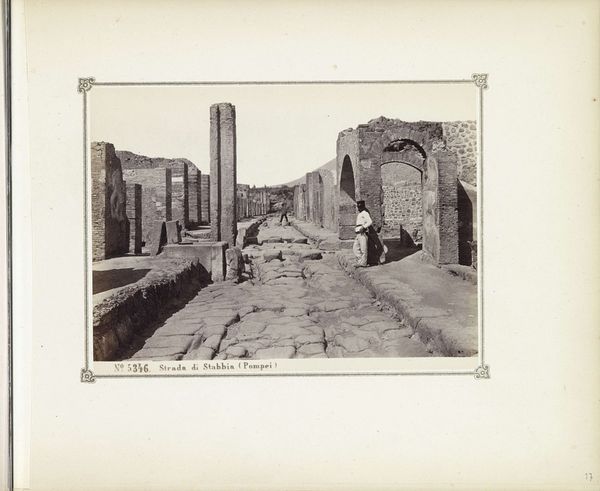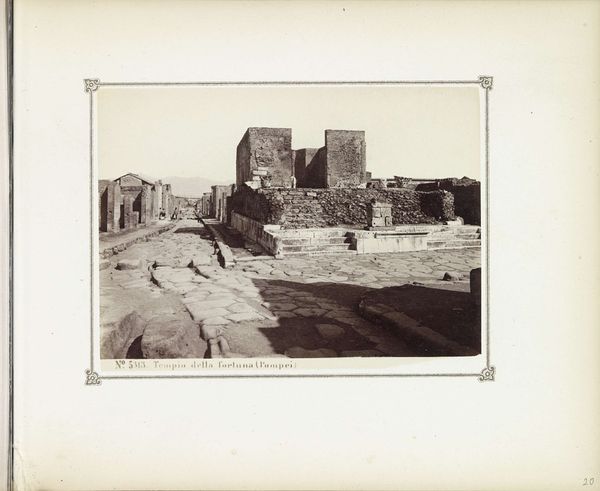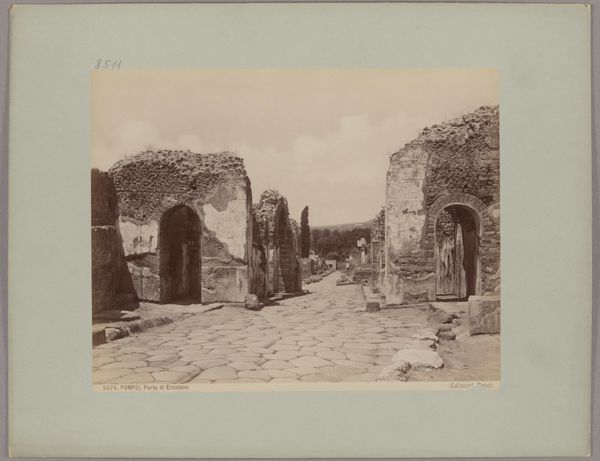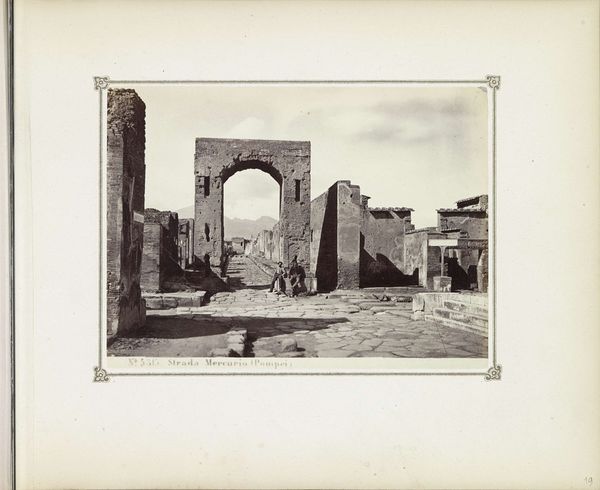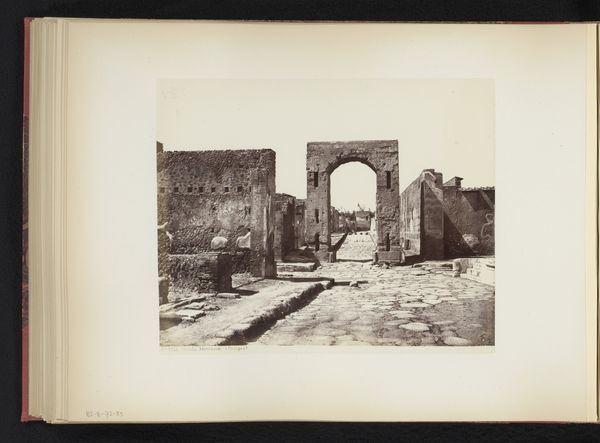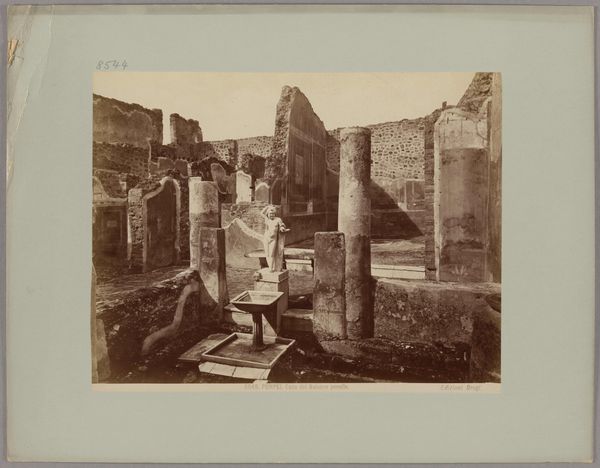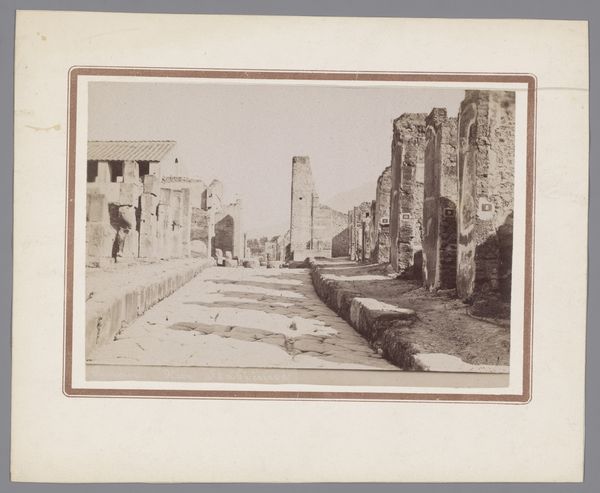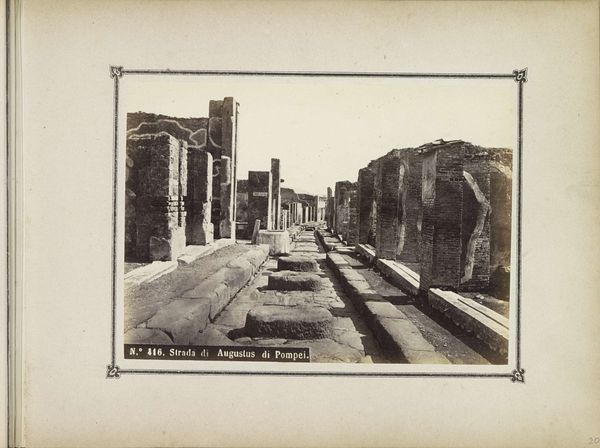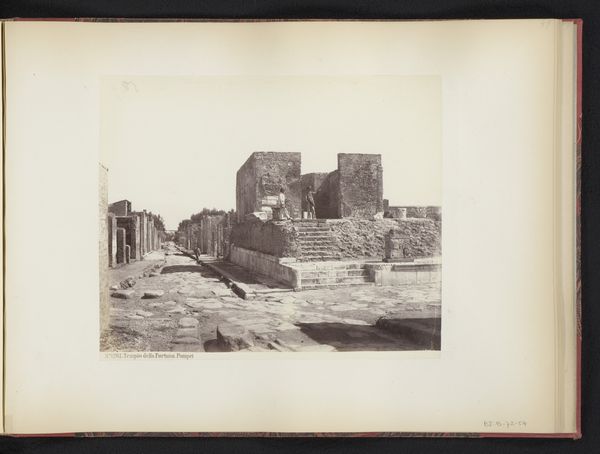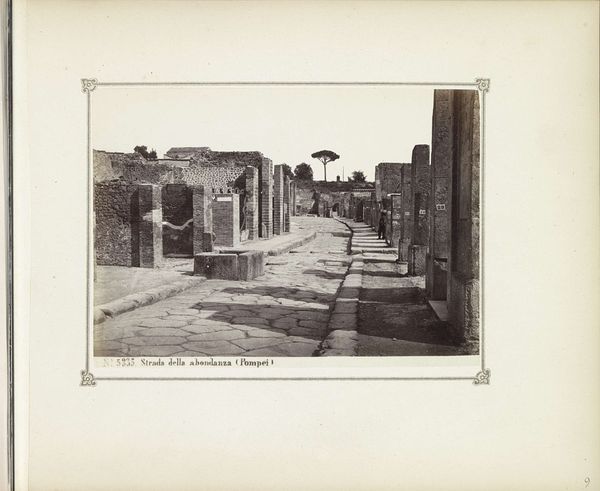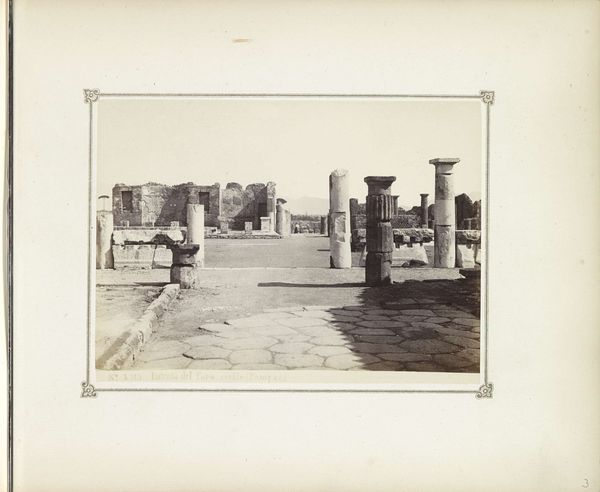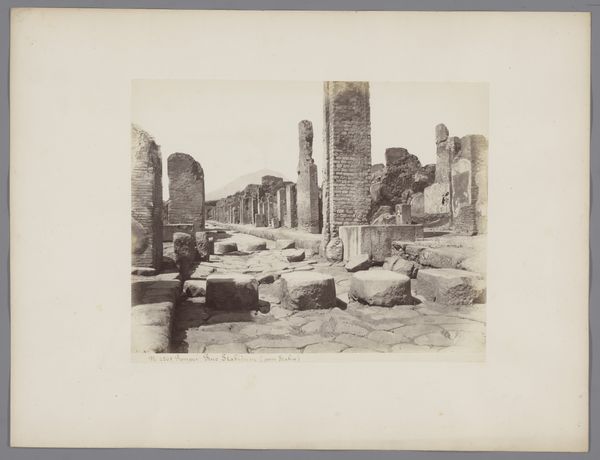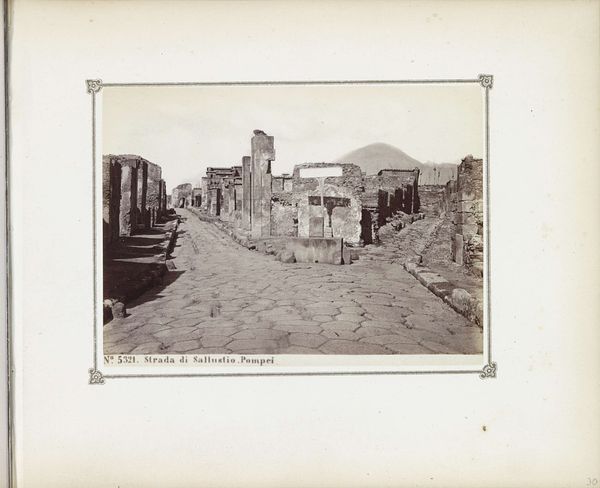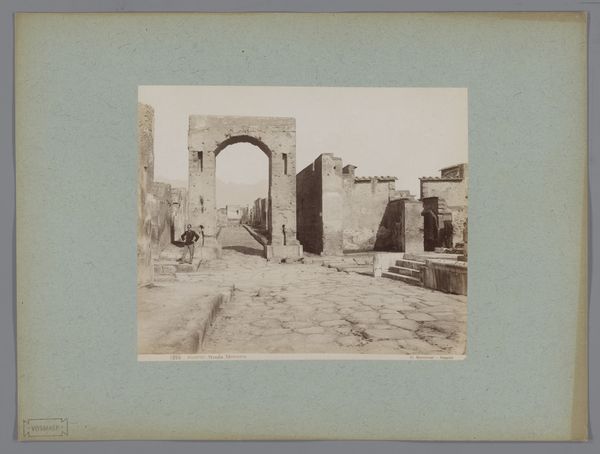
Restanten van een straat en een toegangspoort naar graftombes in Pompeï c. 1860 - 1900
0:00
0:00
photography, gelatin-silver-print
#
landscape
#
photography
#
ancient-mediterranean
#
gelatin-silver-print
#
cityscape
#
italian-renaissance
#
street
Dimensions: height 104 mm, width 138 mm
Copyright: Rijks Museum: Open Domain
Giorgio Sommer created this albumen print of Pompeii sometime before 1914, likely using a large format camera. The inherent qualities of the materials used in the original construction of Pompeii greatly influenced the photograph itself. Notice how the stone pavement, worn smooth by centuries of use, reflects the light. The rough texture of the brickwork and plaster walls, remnants of ancient construction techniques, add depth and shadow to the image. Sommer was not only recording the remnants of a lost civilization, but also participating in a growing industry: tourism. The photograph was a mass produced commodity intended for sale to visitors. The very act of taking and distributing the image also speaks to a social context of archaeological discovery, and the marketing of history as a spectacle. Photographs like this challenge traditional distinctions between fine art and craft, and remind us that images can be both documents of the past and products of their own time.
Comments
No comments
Be the first to comment and join the conversation on the ultimate creative platform.
